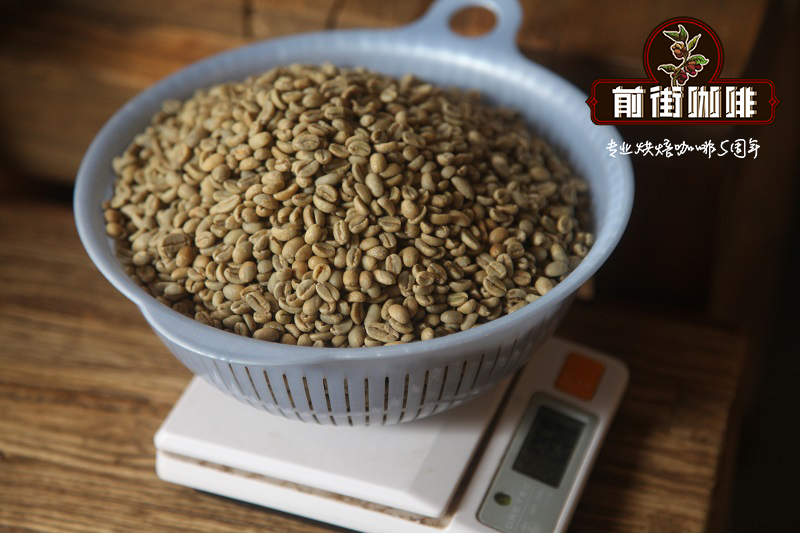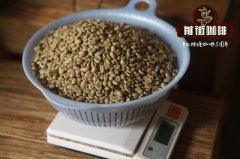Salvadoran Coffee-Characteristics of coffee beans from La Guachoca Farm of the Pacas family? El Salvador

Professional coffee knowledge exchange more coffee bean information please follow the coffee workshop (Wechat official account cafe_style)
Salvadoran Coffee-characteristics of coffee beans on the La Guachoca farm of the Pacas family? How do you cook coffee beans in El Salvador?
Finca La Guachoca is located in the foothills of El Salvador's endangered Cerro Verde volcano, in the fertile Apaneca Ilamatepec mountains, 1410 to 1600 meters above sea level. It is owned and managed by the Pacas family, which has grown coffee in El Salvador since 1905 and has several small estates in the region. They bought La Guachoca-- in 2009 when the farm was called & # 39; San Roberto & # 39; but the family renamed it La Guachoca after the quail-like Guachoca bird, which is native to this part of El Salvador and is often seen on farms.
When the Pacas family took over the farm, it was in poor shape and low yield-but they saw the potential of the land because of its location, altitude and fertile soil. They have been working to improve the quality and quantity of La Guachoca production, replant many sparsely populated areas and prepare soil with organic matter to ensure that young trees have all the nutrients they need to grow healthily. Usually, they fertilize the soil four times a year and the leaves three times.
La Guachoca covers an area of more than 31. 5 hectares and has planted red bourbon trees as well as some Pacas grape varieties. Its soil is very fertile-it contains a lot of nutritious red volcanic rocks, locally known as "cascajo". Maria Pacas tells us that last winter, when the soil slipped on the farm, she had proved how good the soil was for coffee trees-"some coffee plants were buried under the slide, but a few days later, they came out through the red rocks." it looks like it's as happy as roses! "
The gentle slopes of the farm are dotted with native shade-including Ingas,Jocote de Corona,Avocados,Cirin,Lengua de Vaca,Pimientademonta ñ a. These are pruned so that coffee plants get 70% sunlight during fruit growth and 30% at maturity-allowing coffee beans to slowly develop all their characteristics.
This particular site is picked from Tabl ó nElTimbo-a small designated area whose production is handled separately to maintain traceability. El Timbo is the name of a small but poisonous snake and is sometimes found in this area of the farm. The El Timbo site is 1525 meters above sea level and covers an area of 5.9ha.
The bourbon trees on the farm are pruned using the "agobio" method. This involves bending one of the main vertical stems of the tree and connecting its end to the ground-this broadens the tree without harming it, triggering the growth of newly produced branches along the curved stem. This method can help extend the life span of plants to 90 years and increase their yield.
The Pacas family implemented various soil conservation measures on the farm-such as planting native izote plants to prevent erosion, digging "fosas"-large ditches to capture excess Rain Water to help retain water in the soil and capture organic matter. The family continues to grow new coffee and shade every year and introduces endangered native tree species to help protect El Salvador's biodiversity.
Coffee cherries can only be carefully selected when they are fully ripe. They are then "half-washed"-after the coffee is pulped in clean fresh water, it is fermented for 12 hours, washed and dried in the farm's brick courtyard, with some of the mucus still on the beans. When the humidity reaches 12 °, the coffee is then stored in the parchment warehouse on the farm for 30 days, providing enough "re" (rest) for the beans before final grinding and export. The Pacas family has also invested in an internal cupping laboratory to enable them to monitor the quality of each batch of products they produce.
La Guachoca provides 90 jobs per month during harvest and 50 jobs during non-harvest periods.
Farm: Finca La Guachoca
Variety: 100% red bourbon
Processing: fully wash and dry on the clay terrace
Altitude: 1410 to 1600 m above sea level
Owner: Maria Pacas&Family
Town: Canton Lomas de San Marcelino
Region: Cerro Verde,Apaneca-Ilamatepec Mountains
Flavor: orange, refined, sweet, refined sugar, roasted almonds, caramel
Qianjie recommendation:
Filter cup: Hario V60
Water temperature: 88 degrees
Degree of grinding: small Fuji degree of grinding 4
Cooking methods: the ratio of water to powder is 1:15, 15g powder, the first injection of 25g water, 25 s steaming, the second injection to 120g water cut off, waiting for the powder bed water to half and then water injection, slow water injection until 225g water, extraction time about 2:00
Analysis: using three-stage brewing to clarify the flavor of the front, middle and back of the coffee.
Important Notice :
前街咖啡 FrontStreet Coffee has moved to new addredd:
FrontStreet Coffee Address: 315,Donghua East Road,GuangZhou
Tel:020 38364473
- Prev

Why is soe coffee more expensive than mixed beans? which tastes better, SOE or mixed coffee?
Professional coffee knowledge exchange more coffee bean information Please follow the coffee workshop (Wechat official account cafe_style) Italian engineers invented the steam espresso machine at the beginning of the 20th century, and after several evolution, espresso has become an almost unshakable position in the coffee world today. What is Es?
- Next

Flavor and characteristics of Salvadoran Coffee-Kahamaka Farm selected [bourbon Variety] Coffee beans
Professional coffee knowledge exchange more coffee bean information please follow the coffee workshop (Wechat official account cafe_style) Salvadoran Coffee-Kahamaka Award-winning Farm
Related
- Detailed explanation of Jadeite planting Land in Panamanian Jadeite Manor introduction to the grading system of Jadeite competitive bidding, Red bid, Green bid and Rose Summer
- Story of Coffee planting in Brenka region of Costa Rica Stonehenge Manor anaerobic heavy honey treatment of flavor mouth
- What's on the barrel of Blue Mountain Coffee beans?
- Can American coffee also pull flowers? How to use hot American style to pull out a good-looking pattern?
- Can you make a cold extract with coffee beans? What is the right proportion for cold-extracted coffee formula?
- Indonesian PWN Gold Mandrine Coffee Origin Features Flavor How to Chong? Mandolin coffee is American.
- A brief introduction to the flavor characteristics of Brazilian yellow bourbon coffee beans
- What is the effect of different water quality on the flavor of cold-extracted coffee? What kind of water is best for brewing coffee?
- Why do you think of Rose Summer whenever you mention Panamanian coffee?
- Introduction to the characteristics of authentic blue mountain coffee bean producing areas? What is the CIB Coffee Authority in Jamaica?

